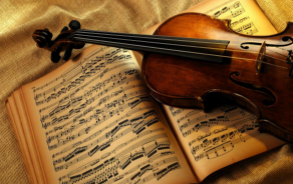Classical music, a genre that encompasses a vast range of styles, forms, and historical periods, has a rich and intricate history. Its origins can be traced back to the earliest forms of musical expression and have evolved through centuries of cultural, social, and technological changes. This article explores the fascinating journey of classical music from its ancient roots to its development into a sophisticated and revered art form. Rauf Hameed
Ancient Beginnings
The roots of classical music can be traced back to the ancient civilizations of Mesopotamia, Egypt, Greece, and Rome. Music in these early societies was an integral part of religious rituals, celebrations, and daily life. The Greeks, in particular, made significant contributions to the theoretical foundations of music. Pythagoras, a Greek mathematician and philosopher, discovered the mathematical ratios that underpin musical intervals, laying the groundwork for the Western musical scale.
The Medieval Period (500-1400)
The medieval period, spanning from the 5th to the 15th century, marks the beginning of what we now recognize as classical music. During this time, the Christian Church played a dominant role in the development of Western music. Gregorian chant, named after Pope Gregory I, became the standard form of liturgical music in the Catholic Church. These chants were monophonic, meaning they consisted of a single melodic line without accompaniment.
As the medieval period progressed, the complexity of music increased. The development of polyphony, the simultaneous combination of two or more independent melodic lines, marked a significant turning point. The Notre Dame School of Polyphony, led by composers like Léonin and Pérotin, introduced innovations such as rhythmic notation and the use of organum, a form of early polyphony.
The Renaissance Period (1400-1600)
The Renaissance period witnessed a flourishing of the arts, including music. Composers began to explore new forms and structures, leading to the development of more complex and expressive music. The invention of the printing press in the mid-15th century played a crucial role in disseminating musical knowledge and compositions more widely.
During the Renaissance, the focus shifted from purely religious music to secular music as well. Madrigals, chansons, and instrumental music gained popularity. Composers like Josquin des Prez, Giovanni Pierluigi da Palestrina, and Orlando di Lasso became prominent figures, known for their intricate polyphonic compositions and mastery of counterpoint.
The Baroque Period (1600-1750)
The Baroque period ushered in a new era of dramatic expression and ornamentation in music. This era saw the rise of opera, a genre that combines music, drama, and stagecraft. Claudio Monteverdi’s opera “L’Orfeo,” composed in 1607, is considered one of the earliest and most significant operatic works.
The Baroque period also witnessed the development of instrumental music, with composers like Johann Sebastian Bach, Antonio Vivaldi, and George Frideric Handel making substantial contributions. The concerto, sonata, and suite became prominent forms, showcasing the virtuosic capabilities of instruments and performers. The use of basso continuo, a continuous bass line played by keyboard and other bass instruments, became a defining characteristic of Baroque music.
The Classical Period (1750-1820)
The Classical period, which followed the Baroque era, is characterized by clarity, balance, and formality. This period saw the rise of the symphony, sonata, and string quartet as major musical forms. Composers like Franz Joseph Haydn, Wolfgang Amadeus Mozart, and Ludwig van Beethoven became central figures in this era.
Haydn, often referred to as the “Father of the Symphony,” made significant contributions to the development of the symphonic form and the string quartet. Mozart, a child prodigy, composed a vast array of works that showcased his exceptional melodic and harmonic skills. Beethoven, bridging the Classical and Romantic periods, expanded the boundaries of musical expression and form, creating works that were both emotionally profound and structurally innovative.
The Romantic Period (1820-1900)
The Romantic period marked a shift towards greater emotional expression and individuality in music. Composers sought to convey deep feelings and explore new harmonic and melodic possibilities. The expansion of the orchestra and the development of new instruments allowed for richer and more diverse sonic textures.
Composers like Franz Schubert, Robert Schumann, Johannes Brahms, and Pyotr Ilyich Tchaikovsky became key figures in the Romantic era. Their music often drew inspiration from literature, nature, and personal experiences. The use of chromaticism, expanded harmonies, and programmatic elements became defining features of Romantic music.
The 20th Century and Beyond
The 20th century brought about significant changes and diversification in classical music. Composers began to experiment with new forms, techniques, and styles, leading to the emergence of various musical movements such as Impressionism, Expressionism, and Minimalism.
Claude Debussy and Maurice Ravel were pioneers of Impressionism, focusing on creating atmospheric and evocative music. Arnold Schoenberg and his students, Anton Webern and Alban Berg, developed the twelve-tone technique, which sought to break away from traditional tonality. Composers like Igor Stravinsky, Béla Bartók, and Dmitri Shostakovich pushed the boundaries of rhythm, harmony, and orchestration.
In the latter half of the 20th century and into the 21st century, classical music continued to evolve, incorporating influences from popular music, jazz, and non-Western musical traditions. Contemporary composers like John Cage, Philip Glass, and Steve Reich explored new avenues of musical expression, challenging conventional notions of form and structure.
The origins of classical music are deeply rooted in the history of human civilization, reflecting the cultural, social, and technological changes that have shaped our world. From the ancient melodies of the Greeks to the sophisticated compositions of the Baroque, Classical, and Romantic periods, classical music has undergone a remarkable evolution. Today, it remains a vibrant and dynamic art form, continually reinventing itself and captivating audiences with its timeless beauty and emotional depth.

No responses yet